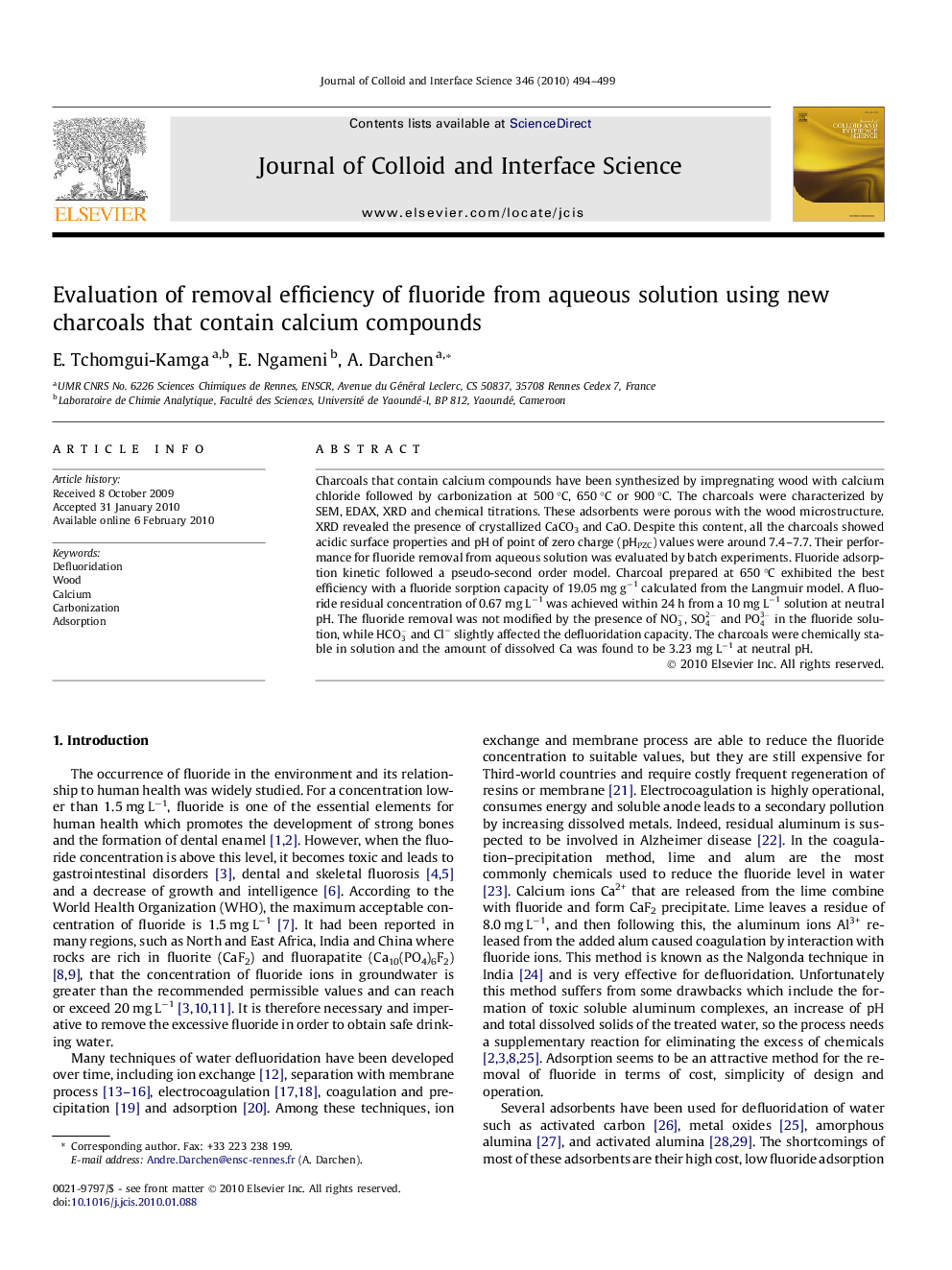| Article ID | Journal | Published Year | Pages | File Type |
|---|---|---|---|---|
| 609793 | Journal of Colloid and Interface Science | 2010 | 6 Pages |
Charcoals that contain calcium compounds have been synthesized by impregnating wood with calcium chloride followed by carbonization at 500 °C, 650 °C or 900 °C. The charcoals were characterized by SEM, EDAX, XRD and chemical titrations. These adsorbents were porous with the wood microstructure. XRD revealed the presence of crystallized CaCO3 and CaO. Despite this content, all the charcoals showed acidic surface properties and pH of point of zero charge (pHPZC) values were around 7.4–7.7. Their performance for fluoride removal from aqueous solution was evaluated by batch experiments. Fluoride adsorption kinetic followed a pseudo-second order model. Charcoal prepared at 650 °C exhibited the best efficiency with a fluoride sorption capacity of 19.05 mg g−1 calculated from the Langmuir model. A fluoride residual concentration of 0.67 mg L−1 was achieved within 24 h from a 10 mg L−1 solution at neutral pH. The fluoride removal was not modified by the presence of NO3-, SO42- and PO43- in the fluoride solution, while HCO3- and Cl− slightly affected the defluoridation capacity. The charcoals were chemically stable in solution and the amount of dissolved Ca was found to be 3.23 mg L−1 at neutral pH.
Graphical abstractDispersion of CaCl2 into wood, followed by carbonization leads to an efficient material for fluoride removal.Figure optionsDownload full-size imageDownload high-quality image (102 K)Download as PowerPoint slide
